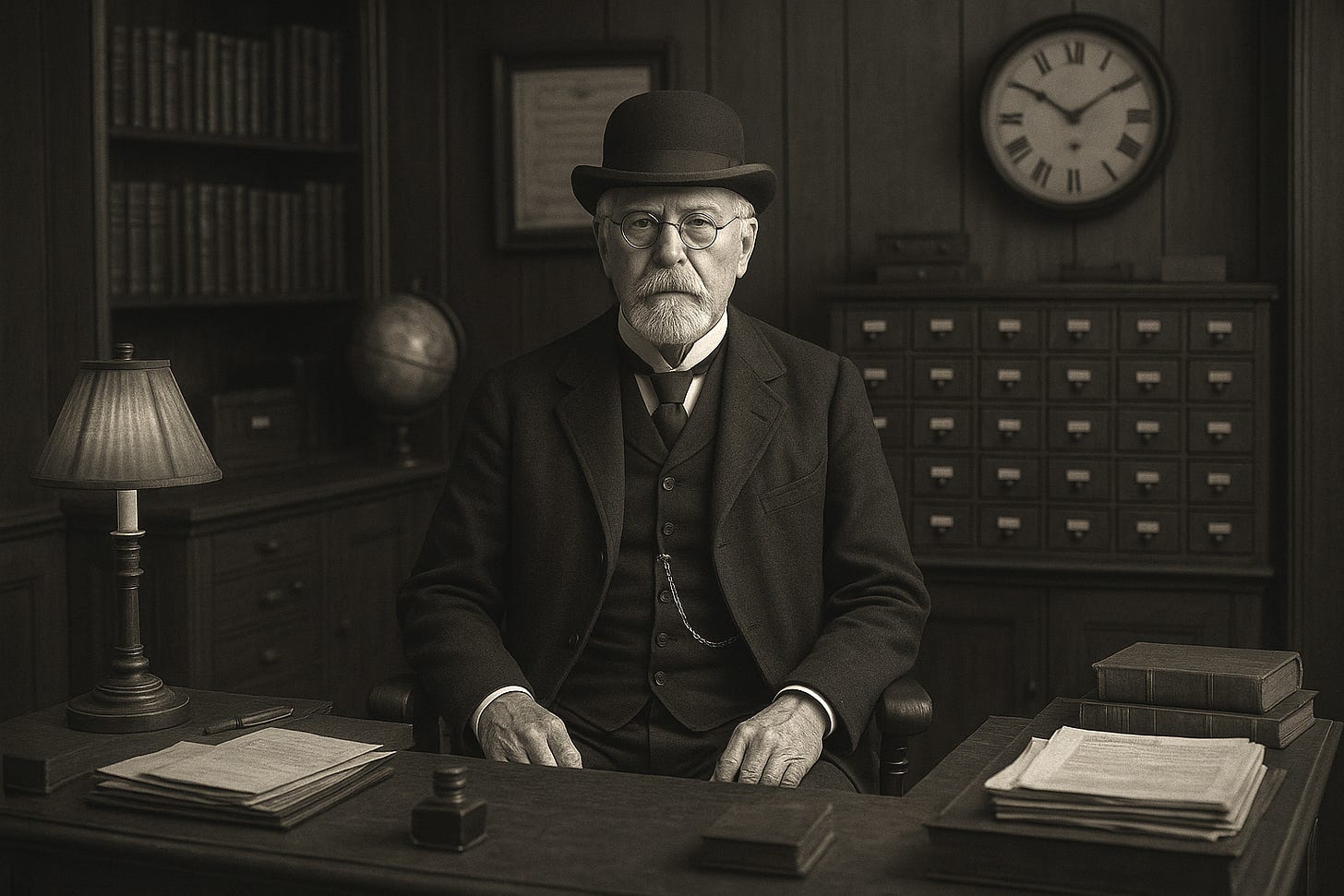No. 8: From the Desk of Cecil Touchon: On the Beautiful Limitations of a Life's Practice
Proof of Life Series: No. 8

From the Desk of Cecil Touchon: On the Beautiful Limitations of a Life's Practice
The Ontological Museum and the Exquisite Family Records are not the work of a committee, a board, or a state-funded institution. They are the outgrowth of one artist’s lifetime of practice - a sustained correspondence with the global art community, carried out by hand, by post, by presence.
They are not built on grants, patrons, or foundations. They are built on years of conversation, gifting, exchange, and endurance.
And so it must be said plainly: this is an unfinished thing. Not a polished legacy or a well-funded system. But rather, a gesture carried out over decades by someone who could not help but do it, even when time, money, and energy made it nearly impossible.
1. A Museum Without a Building, Without a Budget
The Ontological Museum does not yet have the walls it dreams of. It exists in the spaces available - boxes, shelves, archives, photographs, memories. It lives in the gestures of others who contribute to it - not as donors, but as fellow artists, fellow rememberers.
Its exhibitions happen in ‘Locations of Opportunity”- at community art centers, libraries, unpacked from a briefcase and laid out on a gallery floor, assembled on the spot through workshops, assembled in catalogs and anthologies and on inventory blogs on line.
Because there is no financial machine behind it, its growth is organic, slow, and often chaotic. It relies on the goodwill and energy of the living community. There are no assistants on salary. No interns archiving. No publicist arranging press.
It survives because it is loved. And because the one holding it has kept holding it, year after year, letter after letter, even when no one asked him to.
2. The Fragility of the Grand Vision
There is a great risk in any vision that exceeds the capacity of the individual. The artist becomes the archivist, the designer, the administrator, the handler of the keys, the janitor, and the philosopher. Time stretches thin. Fatigue sets in.
You begin to realize: you cannot complete the thing you are building. Not at this personal scale. Not in this body. Not in this span. There are too many correspondents to honor, too many letters unanswered, too many boxes waiting to be sorted.
But perhaps that is part of the point. A museum of becoming must remain unfinished.
3. Art as a Practice of Interaction, Not Product
From the beginning, my work has been about interaction not exhibition, not recognition. Through mail art, collage, Fluxus exchanges, and correspondence with artists all over the world, I have built not a career, but a conversation.
The Ontological Museum reflects that: it is not a brand, but a bandwidth - a frequency that others can tune into. It is a social sculpture, evolving through attention, not acquisition. It is a record of the artist as node, not as authority.
And yet: even this kind of practice takes time, space, and energy. Without outside support, you end up using the best parts of yourself to keep the flame lit, knowing you might never see the full fire.
4. What One Artist Can - and Can’t - Do
There is a real humility in this. A reckoning. A quiet sadness, even. To realize that you may not finish what you started, or receive the recognition that would fund its completion. To realize that your archive may outlive your capacity to shape it.
But there is also a strange joy: to know that you did it anyway. That you left breadcrumbs - gathered breadcrumbs. That you made space for others to step in - not to take over, but to carry forward the tone, the tuning, the trust.
This is not a monument. It is a garden. It needs tending. And it will change with every hand that touches it.
5. A Letter to the Future
If I could say one thing to the artists, poets, archivists, and correspondents of the future, it would be this:
This was not built to be owned. It was built to be found.
It was not built to last forever, but to last long enough that someone else might recognize themselves in it.
It was not made to prove value, but to preserve presence.
And everything I couldn’t do - I leave to you.
Conclusion: The Practice is the Legacy
The Ontological Museum is not my legacy.
The practice is.
The daily, humble work of attention, interaction, and resonance - this is what one artist can offer.
Everything else - whether the building comes, whether the Records are published, whether the collection is ever formally shown - is secondary.
This is what can be done, in one life, without outside support.
It is imperfect. Incomplete. And still - exquisite.



"The Ontological Museum reflects that: it is not a brand, but a bandwidth - a frequency that others can tune into."
Since I assume that the majority of the museum reflects contributions by other artists, how can those contributions be "tuned into"? How about an online "museum" that is accessible to all?